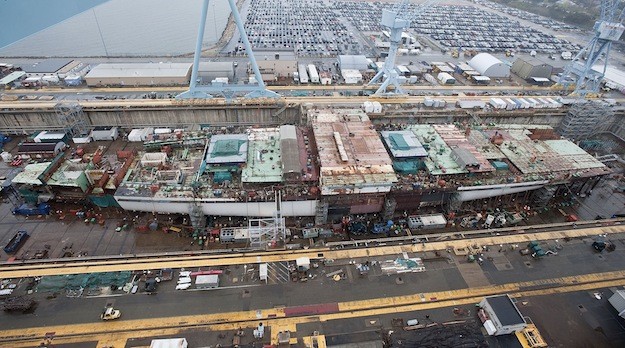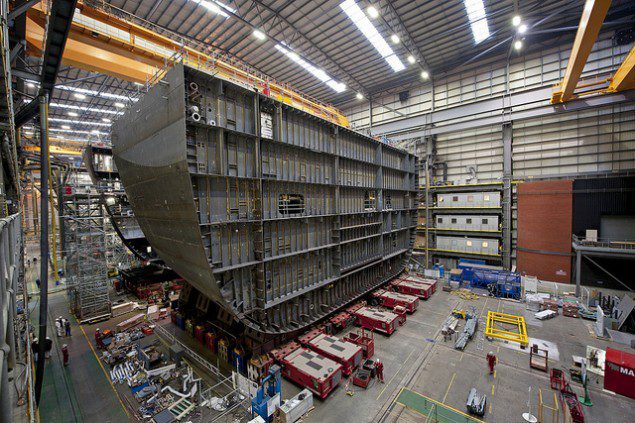
Workers move the first two sections of the 6,000 tonne block of QE class under construction in Portsmouth together for the first time. Image (c) BAE Systems plc via Flickr
By Robert Wall
Nov. 6 (Bloomberg) — BAE Systems Plc, Europe’s largest defense company, will cease warship production at the historic Portsmouth site on the English coast and eliminate 1,775 jobs as the focus for naval manufacturing shifts to Scotland.
Ship construction at Portsmouth will cease in the second half of 2014, with some work for the Queen Elizabeth aircraft carriers moving to Glasgow in Scotland, the London-based company said today. Production of the new Type 26 Global Combat Ship will also take place in Glasgow, it said.
BAE, which bundled U.K. warship building capacity in 2009, has been reviewing the scale of operations in Portsmouth, 70 miles southwest of London, and Scotstoun and Govan in Scotland amid declining demand at home. Today’s announcement consolidates all U.K. shipbuilding in Scotland ahead of a referendum about independence in 2014, a proposed split the British government has said will not be successful.
“It is a huge blow to Britain’s manufacturing and industrial base, with many highly skilled workers faced with losing their jobs,” Ian Waddell, national officer for shipbuilding at the Unite union, said in a statement. “We will have to examine the BAE business case in detail to see how we can secure a future for the workforces at both Portsmouth and in Scotland.”
Offshore Vessels
Job cuts will be split among BAE sites, with 940 reductions planned at Portsmouth in 2014 and 835 across Filton in Wales as well as Glasgow and Rosyth. The cuts will take place progressively through to 2016, BAE said, adding it will retain work in Portsmouth where it undertakes maritime services.
To help bridge a lull in work until construction of Type 26 vessels begins, the U.K. is awarding BAE a contract to build three Offshore Patrol Vessels to keep workers busy.
“This deal will provide the Royal Navy with three brand new maritime patrol vessels with a wide range of capabilities which will support our national interests and those of our overseas territories,” Defense Secretary Philip Hammond said in a statement. The vessels are due from 2017.
The U.K. will also spend 100 million pounds ($160 million) to expand the Portsmouth wharf to accommodate new ships, Hammond said.
Proud History
The decision on Portsmouth ends more than 500 years of naval shipbuilding in the city. Vessels from Henry VIII’s Mary Rose to the galleons that drove off the Spanish Armada and the HMS Dreadnought, the first modern battleship, were built in the south-coast city.
The government is liable to pay the redundancy packages of the workers laid off by the closing of the shipyard, and BAE said today that the cost of the restructuring will be borne by the Ministry of Defense.
As part of the negotiations between BAE and the government, terms for the building of the country’s two aircraft carriers have also been adjusted to reflect higher costs. The program’s price tag has already risen more than 50 percent since 2005, with the U.K. Parliament’s Public Accounts Committee saying in September further increases were expected.
“Under the revised terms, the contract will be amended to accommodate program changes and activities previously excluded from the contract,” BAE said.
There will be a risk sharing between the government and industry on meeting cost targets.
The higher costs reflects a greater understanding of the work involved in building the vessels, BAE Systems Chairman Dick Olver said this week.
Copyright 2013 Bloomberg.
Related articles:
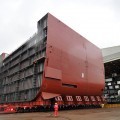
BAE Systems Cuts 1,775 Jobs And Ends Portsmouth Shipbuilding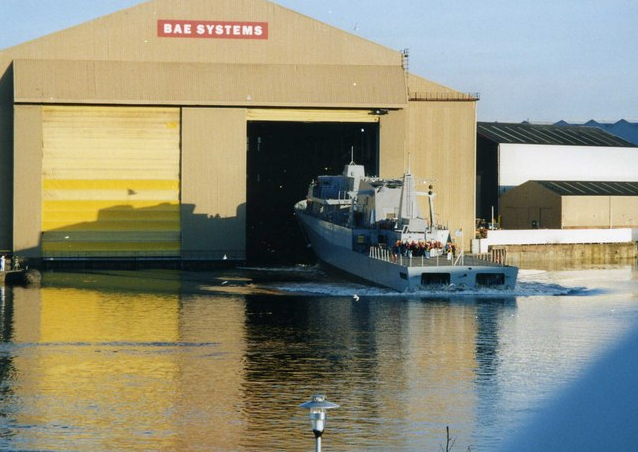
BAE Shipyards to Close One Unlucky Shipyard – Report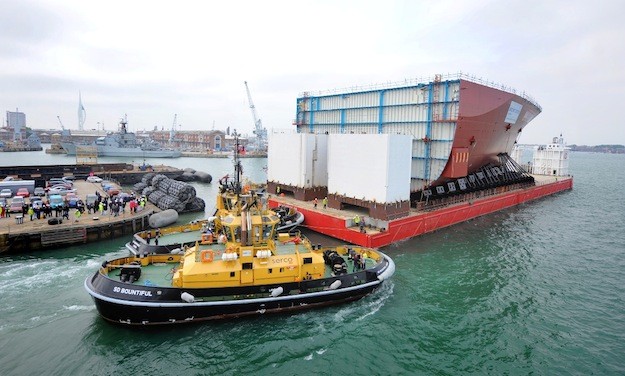
Ship Photo of The Day: Bow of HMS Queen Elizabeth Leaves Portsmouth